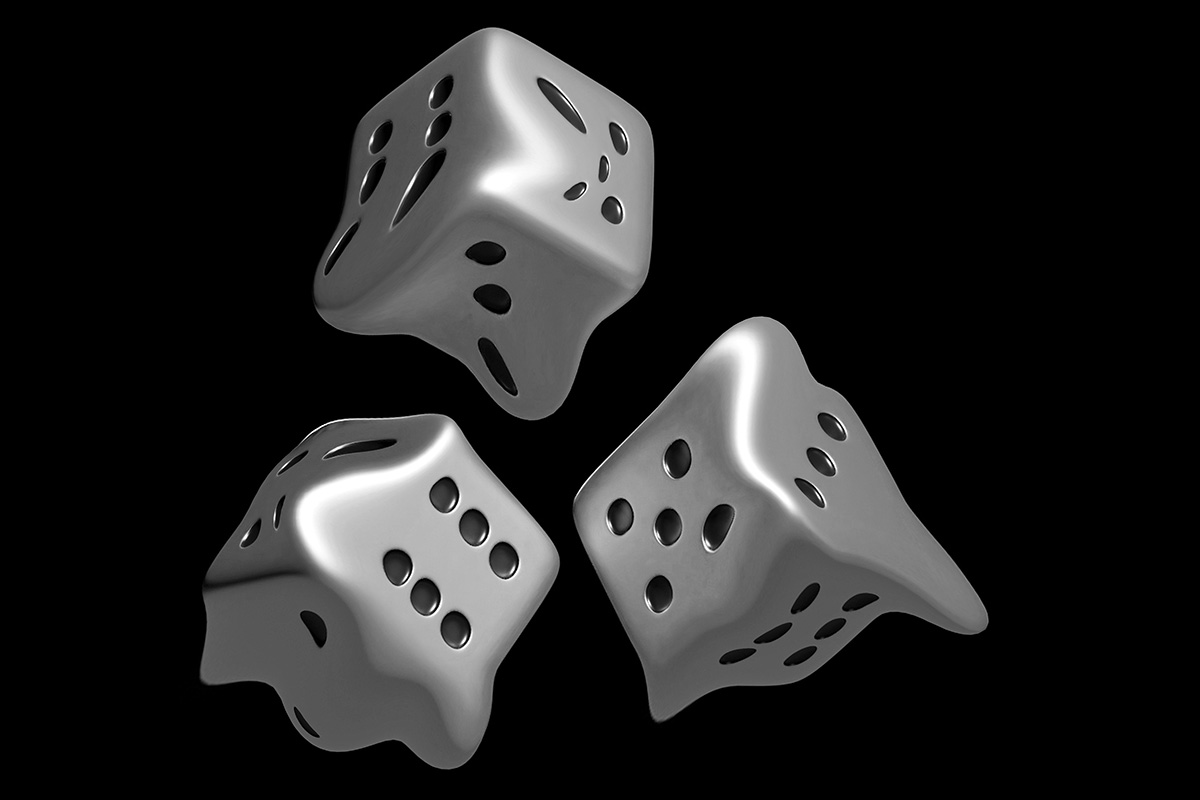

Quantum advantage is a hot topic, with multiple experiments approaching (and some even surpassing) the point at which a quantum technology performs better than its classical predecessor. But how often does quantum advantage arise, and under what circumstances is it possible? These are some of the questions that David Arvidsson-Shukur, Jacob Chevalier Drori and Nicole Yunger Halpern explored in a recent paper in the Journal of Physics A, which (like Physics World) is published by IOP Publishing.
Here, Yunger Halpern and Arvidsson-Shukur describe their research, goals, and plans to experimentally test their predictions.
What was the motivation for your research?
Probabilities govern many aspects of our world, from university admissions to earthquakes to family poker games. These everyday probabilities have exotic cousins known as quasiprobabilities used to describe quantum observables such as an electron’s position and momentum (which cannot be described using a joint probability distribution because the observables are incompatible, being represented by operators that do not commute). Quasiprobabilities resemble probabilities in that they sum to one. However, they can assume negative and nonreal values as well as positive ones. Such values are called “nonclassical,” as they are inaccessible to the probabilities that govern the classical world.
Quasiprobability explorer: Nicole Yunger Halpern. (Courtesy: Nicole Yunger Halpern)
Nonclassical values of a particular quasiprobability have recently been shown to underlie some types of “quantum advantage” – that is, the ability of some quantum technologies to outperform their classical counterparts in computation, measurement, and thermodynamics. This special quasiprobability has an awkward name – it’s called the Kirkwood-Dirac quasiprobability, in honor of two 20th-century physicists – but considering the surnames of all three co-authors on this paper, we can’t criticize!
Given the importance of the Kirkwood-Dirac quasiprobability’s nonclassical values, two natural questions arise: Under what conditions does this quasiprobability behave anomalously? And how strange can its behavior get? That’s what we wanted to explore.
What did you do in the paper?
We pinned down conditions under which the Kirkwood-Dirac quasiprobability assumes nonclassical values. Using these conditions, one can calculate which experiments can exhibit certain types of quantum advantages. We also put a “ceiling” on how much nonclassicality one Kirkwood-Dirac quasiprobability distribution can contain.
What was the most interesting or important finding?
Nonclassical Kirkwood-Dirac quasiprobabilities (and thus the quantum advantages achievable with them) turn out to be rarer than was previously expected. The Kirkwood-Dirac quasiprobability is defined in terms of observables such as position and momentum or components of spin. Researchers previously believed that whenever these observables failed to commute, the quasiprobability would assume nonclassical values. But our research shows that nonclassical Kirkwood-Dirac quasiprobabilities are more outlandish than quantum uncertainty.
Why is this research significant?
Delineating quantum advantage: David Arvidsson-Shukur. (Courtesy: David Arvidsson-Shukur)
For intertwined practical and fundamental reasons, we’re in the midst of the second quantum revolution, in which quantum physics is being applied to outperform everyday technologies in information processing, security, measurement, communication and more. Nonclassical Kirkwood-Dirac quasiprobabilities have been proven to underlie some of these quantum advantages.
Our work reveals conditions under which this quasiprobability becomes nonclassical and conditions under which quantum physics can bring advantages to technologies and protocols. Our results can be used to design experiments that leverage quantum resources. Furthermore, pinpointing what empowers quantum resources helps reveal how the quantum world differs from the classical in a fundamental sense.
What will you do next?
We’re collaborating with Aephraim Steinberg’s lab at the University of Toronto, Canada. Our experimental collaborators use photons to measure a property of a crystal, and they also measure a Kirkwood-Dirac quasiprobability that describes their experiment. The crystal property they’re studying can be inferred most efficiently when this quasiprobability is negative or nonreal. Hence, the experiment signals that a nonclassical Kirkwood-Dirac quasiprobability underlies quantum resources’ ability to enhance our measurement abilities. We hope that this proof-of-principle experiment will lead to more uses of our work in sensing and other quantum technologies.
- Find out more about quasiprobabilities in a webinar delivered by Nicole Yunger-Halpern as part of Physics World’s Quantum Week.
The post Quasiprobabilities shed light on quantum advantage appeared first on Physics World.
more recommended stories
 E-Cigarette Use and Heart Attack Risk in Former Smokers
E-Cigarette Use and Heart Attack Risk in Former SmokersKey Takeaways for Clinicians and Nurses.
 36-Week Pre-eclampsia Screening May Reduce Term Risk
36-Week Pre-eclampsia Screening May Reduce Term RiskA New Preventive Strategy for Term.
 Cardiovascular Risk and Sudden Cardiac Death in Diabetes
Cardiovascular Risk and Sudden Cardiac Death in DiabetesRising Sudden Cardiac Death (SCD) Risk.
 Poor Kidney Function and Alzheimer’s Biomarkers Explained
Poor Kidney Function and Alzheimer’s Biomarkers ExplainedPoor kidney function may influence levels.
 Walking Speed Before Hip Replacement Predicts Recovery
Walking Speed Before Hip Replacement Predicts RecoveryNew Evidence Points to a Simple,.
 Neuroblastoma Drug Combo Extends Survival in Models
Neuroblastoma Drug Combo Extends Survival in ModelsA Promising Shift in High-Risk Neuroblastoma.
 Safer Allogeneic Stem Cell Transplants with Treg Therapy
Safer Allogeneic Stem Cell Transplants with Treg TherapyA new preclinical study from the.
 How Soybean Oil Impacts Weight Gain and Metabolism
How Soybean Oil Impacts Weight Gain and MetabolismWhy Soybean Oil May Affect Metabolism.
 Coffee and Cognitive Function: Evidence Review
Coffee and Cognitive Function: Evidence ReviewA new narrative review in Cureus.
 AI in Emergency Medicine and Clinician Decision Accuracy
AI in Emergency Medicine and Clinician Decision AccuracyEmergency teams rely on rapid, accurate.

Leave a Comment